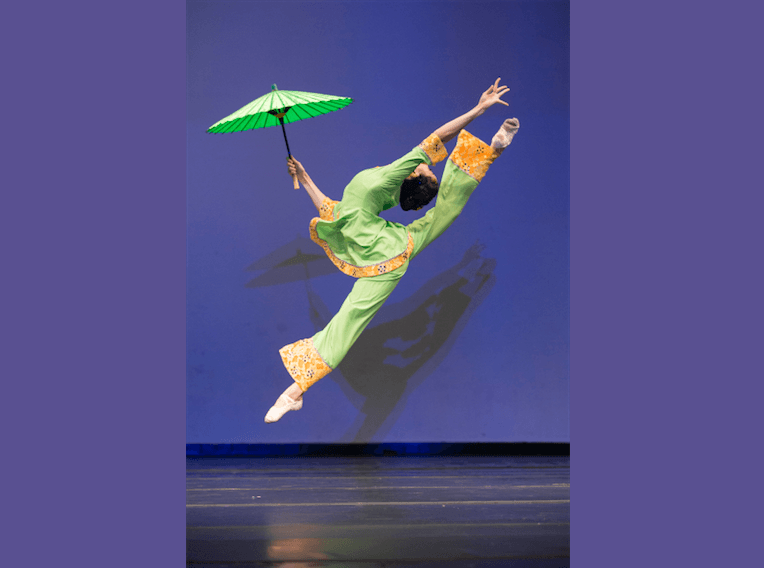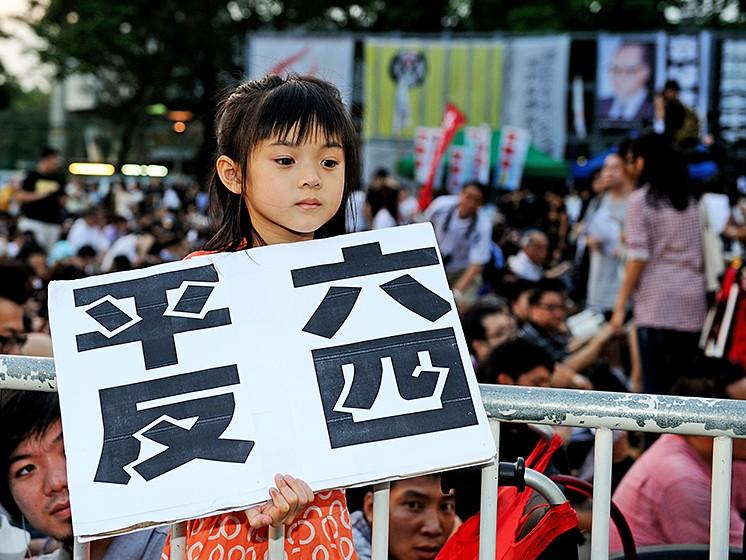
NEW YORK—The theatergoer watched the performance at The London Coliseum earlier this year. “The male dancers are the most spectacular,” he said.
Indeed, the male dancers of Shen Yun are one of a kind. Their performances display powerful, thunder-like masculine energy that is also graceful.
Mr. Cao Yongxin is fortunate to be selected to dance in practicum with Shen Yun Performing Arts and be one of the male dancers who have wowed audiences worldwide with their superb performances of classical Chinese dance.
In a recent interview, Mr. Cao talked in detail about what it takes to become a spectacular male dancer.
Self-discipline and arduous training is the first part. “I practice at least four to five hours a day to perfect my techniques. On top of that, if there are other techniques I feel unsure about, I might add an hour or two of my spare time,” he said. “Every year, if there are tumbling techniques in a piece, I’m usually assigned to do them.”
In Shen Yun’s performances, dance techniques are used differently in group dances—those portraying ancient royal guards or ethnic groups are different from those presented in short pieces that depict stories from history. “For a heroic character, those techniques can help bring about his greatness. For a men’s group dance, there is always a climax. Sometimes dance movements alone are not enough, and we will use tumbling techniques,” Mr. Cao said.
Not many people are aware that the tumbling techniques seen in gymnastics originated from classical Chinese dance, and they constitute one of the core values of the dance system. But to practice them, one has to go through pain, and learn how to conquer it.
Aside from enduring long hours of training, a superb performance also includes inner qualities.
In his description of the feelings portrayed in the male dances, Mr. Cao mentions a Chinese word that is often used to describe men, called “yang gang.” The “yang” in “yang gang” is the same as the “yang” of the Taoist symbol, the Taiji, and “gang” means steel, symbolizing an upright, strong, and constant moral character. The word “yang gang” depicts many values: strength, tolerance, being broadminded and upright, and all are qualities required for men in ancient Chinese philosophy.
The correct portrayal of “yang gang” comes from learning and observing. “For example when we are rehearsing martial arts characters, sometimes I find other dancers’ form of movements very powerful, broad and strong. I will look at how they express their movements, and I can learn from them,” Mr. Cao said. “It is not just full of force or being very fierce. For slow movements, you can show calmness with determination from the heart.”
Such is the concept of bearing, a core concept in classical Chinese dance that can be described as an inner feeling displayed through the movements.
Mr. Cao extends the concept of bearing to the roles he has played in Shen Yun’s performances. His favorite role is that of a Taoist master in a piece called “Splitting the Mountain.”
“A goddess descends to the earth. A human sees her beauty and they later marry each other. But that is against the rule of heaven, so her brother takes her back and locks her in a mountain,” said Mr. Cao. “The goddess’s child is left in the human world. He encounters a master who teaches him martial arts, and then goes up to heaven to battle against his uncle, and he saves his mother.”
Mr. Cao takes much time to research the historical stories to find details that help him understand his role.
“The master in this dance is a person of lofty levels who is not from the human world, and he cultivates the Tao,” said Mr. Cao. “He has good martial arts skills, sees a miserable child and has the heart to help him.”
The thoughts and study of the character stop once he goes on stage. “It is best to not have any thoughts. I just try to do well, but that does not mean to show off. When I focus on following the director’s instructions, and dissolve myself into the character, I believe that the audience will naturally be inspired by my performance,” he said.
For Mr. Cao, the mission of Shen Yun resonates with him. The Chinese Communist Party destroyed much of China’s divinely-inspired traditional culture during the Cultural Revolution, and now Shen Yun wants to revive that traditional culture.
“For Shen Yun, the stage comprises a combination of stunning costumes, an orchestra with traditional Chinese and Western instruments, and beautiful 3-D digital backdrops, all put into one,” said Mr. Cao.
“When everything comes together, it is simply breathtakingly beautiful.”




